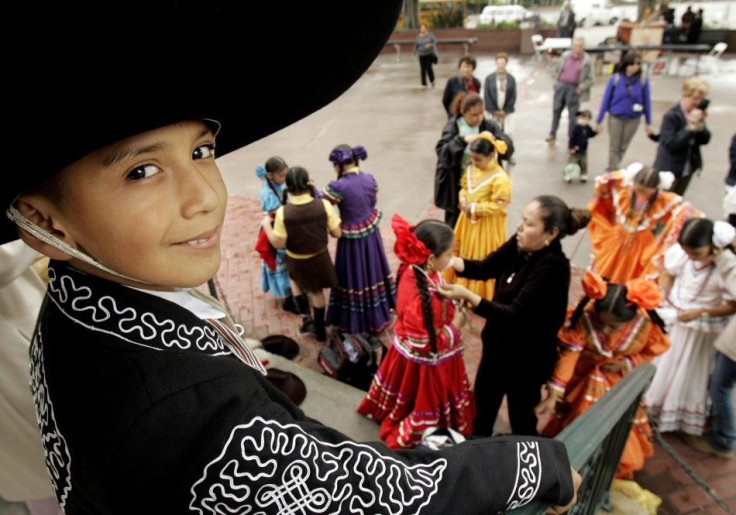What is Cinco de Mayo? The Mexican Battle That Became an American Fiesta

Sure, it's a tequila shot for the hospitality and tourism industry, but what is the history of Cinco de Mayo?
First, Cinco de Mayo isn't, as many people think, Mexico's Independence Day -- that takes place on Sept. 16. Secondly, it isn't even widely celebrated south of the border, though that's beginning to change.
What Cinco de Mayo is is a largely American tradition, co-opted by alcohol companies, that's based on an arguably miraculous military maneuver during the 1862 Battle of Puebla, when a ragtag group of Mexican militiamen defeated the invading French Army. It was a David versus Goliath moment and Mexicans on both sides of the border saw cause for celebration.
Generally, Latin Americans living in the U.S. see the day as an occasion to 'party,' but enthusiasm for learning the historical details is somewhat lacking, said Donald Miles, author of the book Cinco de Mayo: Why is Everybody Celebrating. There are exceptions, of course. University communities with a significant Hispanic population will often have academically-meaningful programs, but they are far outnumbered by community celebrations backed in large measure by the beer companies.
The battle, some historians say, fostered a greater sense of Mexican nationalism than independence or the constitution. Yet, the occasion is rarely celebrated in Mexico outside of Puebla. This may have something to do with the fact that the battle was short-lived. The French returned with more troops and artillery and occupied the country a year later.
Cinco de Mayo celebrations faded for a time as the generations that lived through the battle died off. During this time, the true meaning of the holiday was swept under the rug. Its resurgence came with the Chicano Movement of the 1960s and 1970s. They used Cinco de Mayo as a celebration of cultural pride and by the 1980s they'd enlisted liquor companies as sponsors. Thus the modern holiday, known by some as Drinko de Mayo, was born.
In the United States, Cinco de Mayo has become the Mexican equivalent of St. Patrick's Day. It's a largely fabricated alcohol-infused celebration of all things Mexican from Sauza to sombreros. It's also an opportunity for big business to reach out to the Latino consumer market, and make millions in the process.
Miles said Cinco de Mayo became a bigger holiday in the U.S. for two reasons: attrition in Mexico and marketing in the U.S.
Several decades ago a number of Hispanic organizations in the U.S. sued Coors Brewing Company for discriminatory marketing practices, he said. The settlement included an agreement by Coors to end those practices and to support Hispanic civic organizations in their community activities. This involved a few Mexican-American communities and small celebrations at first, but evolved over the years into larger and larger fiestas.
Other beer companies came to realize that Coors was enjoying a greater market share among Hispanics and began to sponsor fiestas -- Mexican, Cuban, Puerto Rican, Central American, etc., all over the country.
Not much attention was paid to the history, Miles said. Participants at the fiestas will tell you that they are celebrating their 'heritage,' but most can not elaborate.
In Mexico, meanwhile, political turbulence and frequent changes in government caused the original meaning of Cinco de Mayo to fade into the background. It's no longer an official national holiday.
A recent study found some 122 Cinco de Mayo festivals in the United States -- and that's not counting all the celebrations offered at neighborhood bars and restaurants. New York City celebrates with street fairs in Spanish Harlem and Queens. Folklorico dancers will stomp to Mexican music in Houston while Mariachi concerts liven up Albuquerque. Even cities like Des Moines, Iowa will have all-day celebrations of Mexican art, culture, food, and music.
As one might expect, the city where the battle occurred 150 years ago has launched a marketing campaign hoping to tap in to the American craze by inviting visitors to celebrate the anniversary this year. Roughly 80 miles southeast of Mexico City, the town of Puebla celebrates Cinco de Mayo as a day honoring self-determination and liberty.
Many Mexican-Americans see Puebla's tourism push as an opportunity. It's a chance to take back the holiday and bring it closer to its roots -- a chance to teach the gringos about Cinco de Mayo beyond the corona buckets and grande margaritas.
Puebla has big plans for the sesquicentennial anniversary, and the UNESCO World Heritage Center invested roughly $62 million in Cinco de Mayo-related public projects and special events. The highlight is a parade marshaled by Mexican President Felipe Calderon featuring 62 decorative floats, 8,000 military troops, and 20,000 students and teachers. Following the parade, former Miss Universe Ximena Navarette will host a star-studded Cinco de Mayo Spectacular while Marc Anthony will headline a free concert.
Other events include the International Mole Festival, a culinary extravaganza honoring the region's esteemed mole poblano, and the 2012 Puebla State Fair, offering carnival rides, concerts, and bullfights.
The massive tourism drive is an attempt to boost Puebla's tourism numbers and put Mexico's gastronomic capital on the tourist map. It's also an opportunity to teach the world the true meaning of the holiday.
A similar initiative is under way in Texas. Miles is part of a group organizing what he believes is the first attempt to reenact the Battle of Puebla north of the border. Miles said Hispanics represent a majority of the school population in the area but their history is often neglected in school textbooks.
Many will celebrate Cinco de Mayo this year without any clue what the holiday is about. Some communities, however, will use the 150th anniversary as an opportunity to teach the public of its greater meaning.
So far, it's not much of a 'movement' to take back the historical roots, Miles said, but one has to start somewhere.
© Copyright IBTimes 2024. All rights reserved.






















